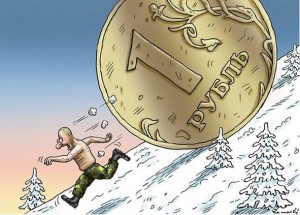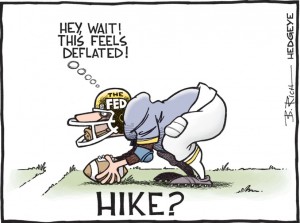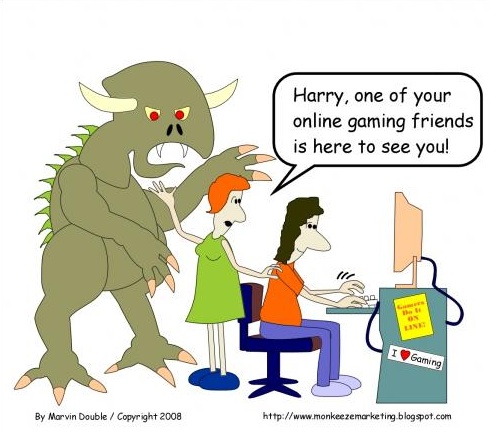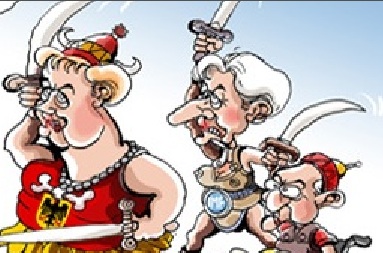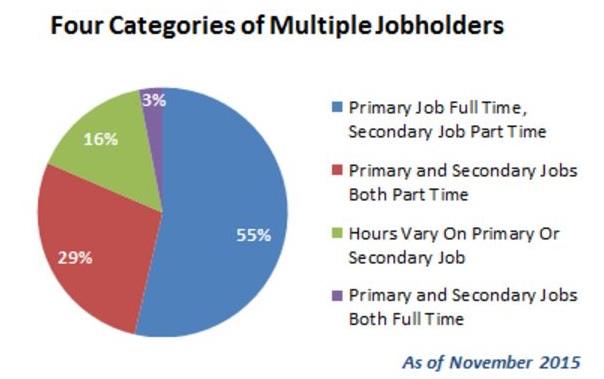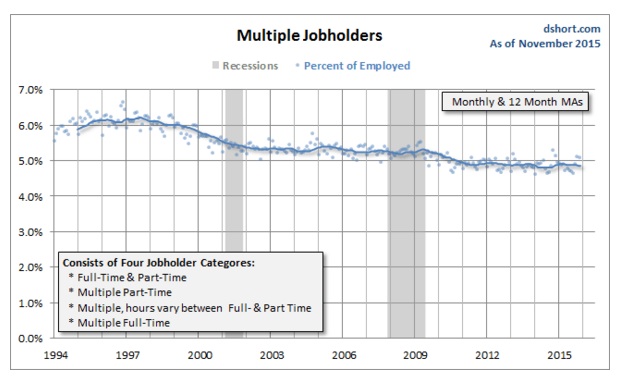The Russian economy is the G-20’s worst performer, contracting by 3.8%. President Vladimir Putin claims that his economic policies remain consistent; in fact, he has wisely changed course, limiting the damage that could have been done had he not.
Anders Aslund writes: At the end of 2014, Russia was seized by financial panic. The Central Bank of Russia (CBR) responded to collapsing oil prices by floating the ruble, which immediately lost half its value. Desperate Russians rushed to buy whatever they could before their money became worthless. Inflation shot up to 16%.
In 2008-2009, the Russian Central Bank CBR pursued a policy of gradual devaluation, bailing out all big state-owned and private corporations, regardless of their performance. This time, Russia has maintained a floating exchange rate, conserving its reserves. The CBR stabilized the market by shock-hiking its interest rate, and has since reduced it gradually, as any sound central bank would.
Russia did adopt an anti-crisis stimulus package; but, at 3.5% of GDP, it was just one-third the size of the 2008 package. And while the Russian government singled out some enterprises as “strategic,” it actually gave them very little money. Many big companies, most notably in the construction and aviation sectors, were forced into bankruptcy. Creative destruction has been revived somewhat. Life is a little less secure for Russia’s rich.
Since the expropriation of Yukos Oil Company in 2004, Putin’s policy had been highly benevolent to large state-owned firms. The state financed their purchases and investment projects with seemingly inexhaustible oil revenues. But now, with oil prices down sharply, Russia’s export revenue has plummeted by 30% this year, and state funds have become very scarce.
Something had to give, and, to Putin’s credit, it was not fiscal conservatism. This year, Russia’s budget deficit is expected to be just 2% of GDP, rising to 3.5% in 2016 – a remarkably strong performance given that the country has had to weather a trade shock and international financial sanctions. Next year, the government is set to use $40-45 billion of its reserve fund for budget financing.
Accomplishing this has required Putin to abandon some of his regime’s taboos. For the first 15 years of Putin’s rule, Russians’ standard of living rose steadily; but it has fallen sharply since November 2014. Real wages are set to plummet by 10% this year. Real pensions are also declining, and spending on health care and education is set to fall by 8% next year.
State-owned firms have been affected as well. Gazprom, Rosneft (which absorbed Yukos), and Russian Railways have been publicly begging for government money. Last December, Putin accepted a complex financing scheme for Rosneft. But by August, it was clear that all three corporate giants would receive only a small share of what they wanted.
Given Western financial sanctions, Putin’s effort to conserve state funds is entirely sensible. Still, the significance of these changes should not be exaggerated. Their macroeconomic impact is substantial, but no systemic reforms are on the agenda. Unlike China, Russia has made no attempt to rein in rampant corruption at the top. Nor has anything been done to strengthen the rule of law. Tens of thousands of presumably innocent Russian businessmen sit in pretrial detention because security officials want to seize their companies. Protectionism proliferates as Russia imposes ever more trade sanctions.
The big question is how Russians will respond when they realize that the decline in their standard of living is not temporary, as it was in 1998. In 2014, Russia’s GDP was $2.1 trillion (at the current exchange rate). It has plunged to $1.1 trillion. These numbers do not reflect purchasing power, but the Russian middle class measure their salaries in dollars. So far, public reaction has been muted, but a two-week protest by Russia’s truck drivers over a new highway toll suggests that popular quiescence may not last.
Russia’s economy was stagnating even before the bottom fell out of global oil prices, and most experts expect energy prices to remain low for years. This confronts Putin with a challenge he has never faced: leading Russia at a time when there is no light visible at the end of the tunnel.

